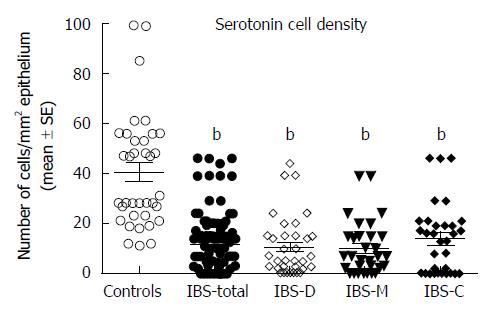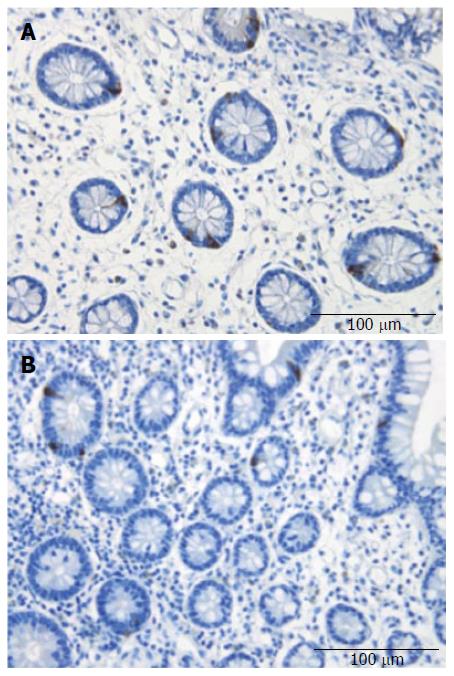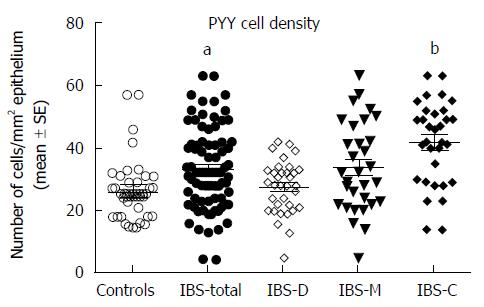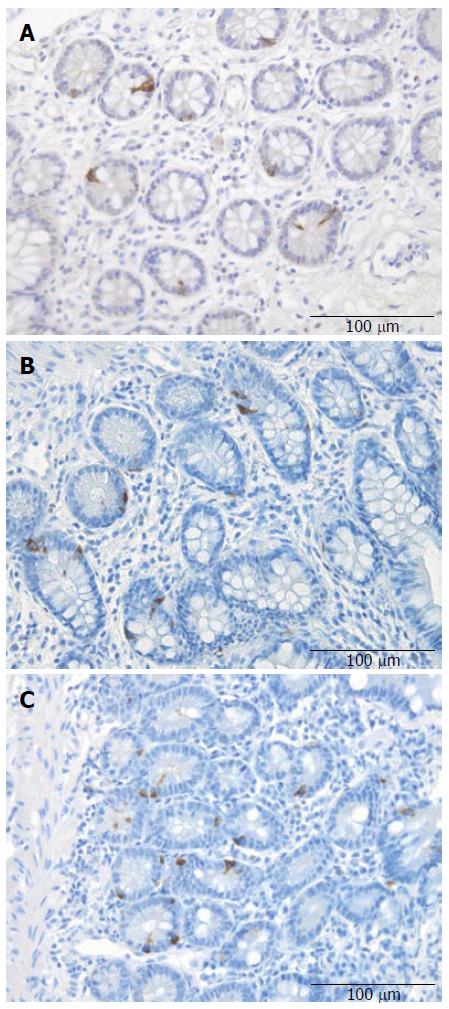Copyright
©2014 Baishideng Publishing Group Co.
World J Gastroenterol. Mar 7, 2014; 20(9): 2383-2391
Published online Mar 7, 2014. doi: 10.3748/wjg.v20.i9.2383
Published online Mar 7, 2014. doi: 10.3748/wjg.v20.i9.2383
Figure 1 Serotonin cell densities in the ileum of controls and in all patients with irritable bowel syndrome, patients with diarrhea as the predominant symptom, patients with both diarrhea and constipation, and patients with constipation as the predominant symptom patients.
bP < 0.01 vs controls. IBS-total: All patients with irritable bowel syndrome; IBS-D: Patients with diarrhea as the predominant symptom; IBS-M: Patients with both diarrhea and constipation; IBS-C: Patients with constipation as the predominant symptom.
Figure 2 Ileal serotonin-immunoreactive cells in a control subject (A) and a patient with irritable bowel syndrome (B).
Figure 3 Peptide YY cell densities in the ileum of controls and in all patients with irritable bowel syndrome, patients with diarrhea as the predominant symptom, patients with both diarrhea and constipation, and patients with constipation as the predominant symptom patients.
aP < 0.05, bP < 0.01 vs controls. PYY: Peptide YY; IBS-total: All patients with irritable bowel syndrome; IBS-D: Patients with diarrhea as the predominant symptom; IBS-M: Patients with both diarrhea and constipation; IBS-C: Patients with constipation as the predominant symptom.
Figure 4 Peptide YY cells in the ileum of a control subject (A), a patient with irritable bowel syndrome into diarrhea (B), and a patient with irritable bowel syndrome into constipation (C).
- Citation: El-Salhy M, Gilja OH, Gundersen D, Hatlebakk JG, Hausken T. Endocrine cells in the ileum of patients with irritable bowel syndrome. World J Gastroenterol 2014; 20(9): 2383-2391
- URL: https://www.wjgnet.com/1007-9327/full/v20/i9/2383.htm
- DOI: https://dx.doi.org/10.3748/wjg.v20.i9.2383












